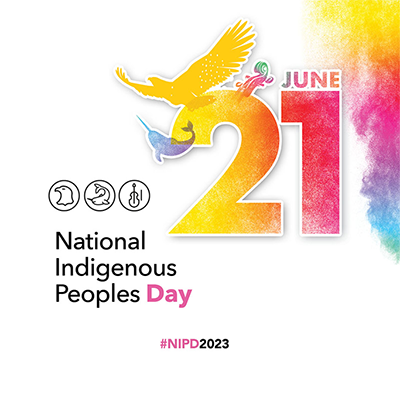June 21 is National Indigenous Peoples Day. No matter who you are – Indigenous, non-Indigenous or a newcomer – this is a dedicated day to recognize and celebrate the culture and contributions of First Nations, Métis and Inuit people in this nation and learn more about their histories. It’s also a time to honour the resilience, stories and achievements of the Indigenous peoples, who have been on this land since time immemorial and who continue impact this nation today.
June 21 was selected as National Indigenous Peoples Day by the national Indigenous organizations and the Government of Canada because it’s the summer solstice. Summer solstice is not only the longest day of the year but it’s one that holds great significance for many Indigenous communities. On or around this day, festivities are held coast to coast in recognition of Indigenous peoples’ rich heritage and contributions.
In recognizing National Indigenous Peoples Day, it’s important to note that Indigenous peoples are not a monolith. First Nations, Inuit, and Métis peoples have their own distinct languages, cultural practices and spiritual beliefs. These diverse groups are represented in countless (if not all) occupations across Canada.
That being said, Indigenous peoples do share some similarities – in particular, the grave historical and present-day injustices that have and continue to be perpetrated against them.
For example, the average total income of Indigenous people was 75% of the average total income of non-Indigenous people in 2015 – that is a 25% gap. 1 In a recent Statistics Canada report, Indigenous women’s incomes were said to be 55% of that of non-Indigenous men. 2 In many workplaces, Indigenous peoples are also underrepresented, underpaid and/or undervalued.
Yet Indigenous workers, like all workers, deserve to be treated and paid fairly. Something for businesses to keep in mind is that Indigenous populations are growing at twice the rate than that of non-Indigenous populations – the fastest growing demographic as of 2021. 2 This is a large, upcoming talent pool that needs to feel supported and included for the workforce of the future to flourish.
Upcoming Indigenous Workplace Inclusion Webinars
As we join this nation in celebrating National Indigenous Peoples Day, this is an opportune time for HR professionals to reflect on how to champion Indigenous inclusive workspaces today and moving forward. The following is by no means an exhaustive list, but here are a few resources you can access to help further indigenize your workplace culture, policies, procedures and practices.
June 29 | Indigenous Inclusion Thought Leadership Series: A History of Indigenous Inclusion in the Workplace Webinar
As continuation of Indigenous Works’ celebration of Indigenous History Month, we will explore the history of Indigenous inclusion in the workplace. Through an examination of the history and statistics of Indigenous peoples in the workplace, we will explore the demography and geography of participation in various industries and how it has changed over time. This webinar will…
- Include an overview of the history and statistics of Indigenous inclusion in the workplace
- Explore the nuances of demography and geography of Indigenous people and how they may impact recruitment
- Discuss the importance of ongoing education and training for employers and employees in order to create a workplace that recruits, retains and values Indigenous people and promotes reconciliation.
July 27 | Indigenous Inclusion Thought Leadership Series: Top 10 HR Insights from IW Employer Partners
Enhance your human resources practices with Top 10 Insights from IW Employer Partners. In this webinar, we will delve into the collective wisdom of our esteemed partners to explore key HR insights that can inform your organizational strategies. This webinar will…
- Map the journey to develop your organizational Knowledge Capital
- Help you gain a deeper understanding of the Indigenous employment landscape in Canada and how to effectively navigate it
- Help you recognize the diversity of the Indigenous experiences across Turtle Island
- Show you how to foster cultural awareness during the candidate selection process.
Additional Resources
- August 8: Diversity and Inclusion Certificate Program
- September 13: More than Words: A Living, Breathing Land Acknowledgement
- HRPA Professional Guidance: Addressing Racism and Racial Discrimination in the Workplace
